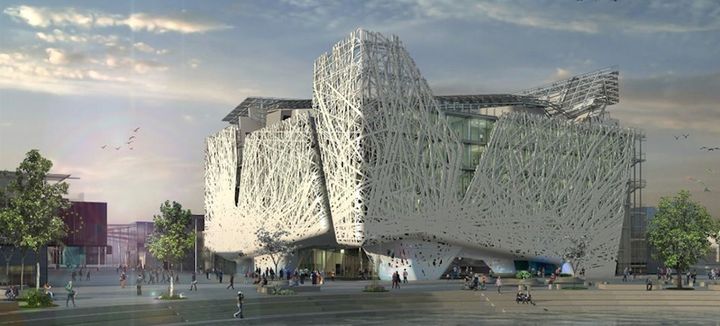
Architects and environmental scientists have been teaming up to address an interesting question: is it possible—and economically feasible—to design and construct buildings that can passively clean smoggy urban air?
As it turns out, relatively straightforward chemical reactions to improve air quality can be triggered with a little help from the sun. Add some clever design, and you’re most of the way there. It’s already happening in famously smoggy Mexico City, where a hospital building called the Torre de Especialidades is shielded by an eye-catching 100-yard-long façade made with special tiles that have air-scrubbing abilities.
The mass-produced tiles, created by Berlin-based architecture firm Elegant Embellishments, are coated with titanium dioxide, a pigment that can act as a catalyst for chemical reactions when it’s activated by sunlight. When UV rays hit the tiles, a reaction occurs, converting mono-nitrogen oxides (the substances that makes smog smoggy) into less harmful substances such as calcium nitrate and water, along with some not-so-wonderful carbon dioxide. The titanium dioxide in the tiles doesn’t change; it can keep on doing its thing indefinitely.








